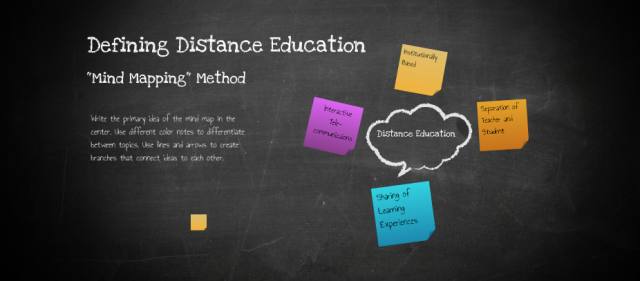My Personal Definition of Distance Learning
As an active duty military member, my first five years in the military included three major moves, one earth-shattering event (9/11), and one deployment. In 2001, internet was still dial-up (in England), and distance learning meant sitting in the base education office watching a DVD. With no easy, cheap, and reliable internet access, distance learning was recorded lectures or video teleconferencing, a cumbersome task made more difficult due to differences in time zones. By 2005, broadband was available, and my educational path was revolutionized! I could attend school on my own time? No boring lectures and 4-hour classes after a 10-hour workday? Sign me up! For me, and many others distance learning was the use of non-traditional academic communication methods to reach a wider variety of students (traditional communication being face-to-face instruction). Come to find out distance learning is defined by much more than simply communication methods. In hindsight, that’s like saying great zombie movies must simply contain zombies. NOOOOOO sir, life ain’t that simple.
My Revised Definition of Distance Learning
In Teaching and Learning at a Distance, the authors state that distance learning should contain all four of the following characteristics: learning must be institutionally based, teacher and student must be separated, course must contain interactive distance or electronic communication, learning experiences and resources must be shared (Simonson, Smaldino & Zvacek, 2015). The biggest difference between this definition and my definition of distance learning is the expectation of interaction between learner and teacher. I consider myself to be a connoisseur of online schools (I have personally sampled four of them in my ten illustrious years and an undergraduate. Don’t judge), and I am sad to say I have attended distance learning that apparently was NOT distance learning.
As you may be able to tell, my experience with distance learning was previously limited to higher education, but as the Air Force grows “leaner”, they have created what I previously considered to be distance learning and made it mandatory professional military education. Unfortunately, it does not contain the interaction needed to define it as distance learning. Connecting learners, resources and instructors means “there are instructors who interact with learners and that resources are available that permit learning to occur” (Simonson, Smaldino & Zvacek, 2015).
My Vision for the Future of Distance Learning
I believe the next step in distance learning is the use of virtual reality. Virtual reality can provide virtual education, not the commonly used term used interchangeably with e-learning, but actual experience facilitated by a computer (think Siri teaching Algebra I). Imagine instead of Siri telling you which restaurant is closest, you were able to diagnose mental disorders, or identify the source of a rash. “Software simulation for academic courses that do not require lab experiments, i.e., history, can meet the needs of learners. Experiments are arranged by two categories: 1) those designed to characterize theoretical concepts to the student through the experiment, and 2) those that are designed to substitute actual experiments where the outcomes depend largely upon various experiments that the student performs.” (Alhalabi, Hamza, Hsu, & Adandapuram, 1999).
There are AWESOME tools available that can revolutionize the way teachers and students interact. My mind was just blown by Eon Reality, a platform in which students can use avatars to appear in classrooms or instructors can use avatars to appear wherever their students are. The possibilities really are endless when it comes to interaction, but we as ID’s have to keep our eyes on the prize. We have to always ask ourselves is this training effective and use objective means to validate effectiveness. I know I just stood on my soapbox, so to end this on a lighter note, I’ll leave you the link to eon reality so you to can have your mind blown. Thanks for reading!
REFERENCES:
Alhalabi, B., Hamza, M. K., Hsu, S., & Anandapuram, S. (1999). Virtual Education: Reality or Virtuality
Moller, L., Foshay, W. R., & Huett, J. (2008). The Evolution of Distance Education: Implications for Instructional Design on the Potential of the Web. Techtrends: Linking Research And Practice To Improve Learning, 52(3), 70-75.
Simonson, M., Smaldino, S., & Zvacek, S. (2015). Teaching and Learning at a Distance: Foundations of Distance Education (Sixth Edition ed.). Charlotte, NC: Information Age Publishing Inc.
